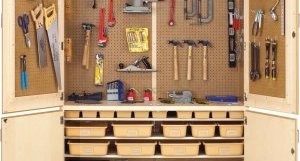
The Makerspace is an Equal-Opportunity Classroom
The makerspace is quickly becoming a must-have in modern schools. There is no doubt that this innovative alternative learning space is helping students develop important skills, including collaboration and out-of-the-box thinking. However, if the makerspace is only targeted at typically- developing students, our schools will be missing out on the incredible possibilities for this space. With all of the skills that a makerspace promotes and facilitates, this is the perfect place, where students with different learning needs can thrive.
Imagine what it’s like to sit in a typical classroom when you have difficulty focusing, or reading, or even understanding how to meaningfully contribute to a discussion, on a daily basis. For students who regularly experience challenges when confronted with traditional learning spaces and subjects, the makerspace can be a real opportunity to shine.
“Students who have unique learning needs thrive in a makerspace because it allows them to express themselves without fear of failure.” And that includes English language learners, who might feel inadequate and unintelligent all the time. The language of creativity and innovation is universal, a way for students to showcase their competencies without words, and feel successful, no matter what level they are on.
While a makerspace can certainly develop confidence, it’s not all about feeling good. There are cheaper ways of boosting morale and self-worth, than building, furnishing and stocking a makerspace. The tinkering, building, problem solving and teamwork that characterize this space also help to develop motor skills and coordination. That means that this could also be a great space for groups of students who work with an occupational therapist. Even with the regular classroom teacher, this space can create an opportunity to develop life skills that differently-abled students need to work on, in a fun and personalized way.
But the benefits don’t end there. With open-ended maker tasks comes the opportunity to move through multi-step problem-solving, as small projects expand to become larger ones. This process naturally lends itself to improving executive-functioning skills. Additionally, as maker projects often involve working as a team, they also develop healthy social communication, through collaboration. Both of these skill sets are critical for all students, but are often a particular focus for students with special needs.
When you really think about it, it’s easy to see why a makerspace is clearly beneficial for all of our students, especially those who are differently abled. Whether they are regularly in the classroom with typically-developing peers, or generally learning in a separate space, this can be a real opportunity for inclusion of all students, as they tinker and problem-solve together. With all of the opportunities this space has to offer our uniquely-abled students, we should definitely be taking full advantage of our makerspaces.